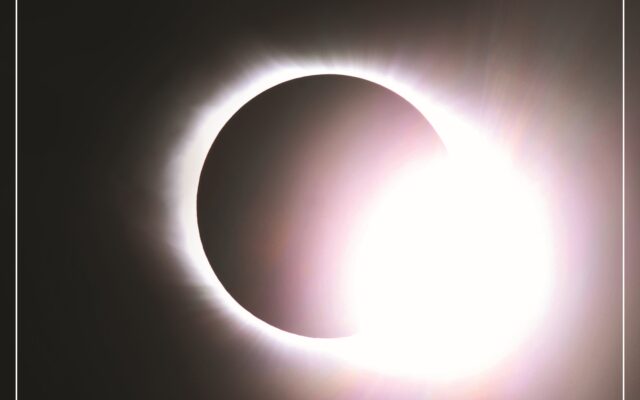
What you need to know about the 2024 total solar eclipse in Maine
By Christopher Burns, Bangor Daily News Staff
Maine is uniquely situated for a front-row seat to a rare astronomical phenomenon.
The moon will pass in front of the sun on April 8, casting a wide swath of Maine into utter darkness — if only for a matter of minutes.
Now is the time for you to start planning now to make the most of this cosmic ballet.

When does the eclipse start?
The moon will pass in front of the sun over Maine at approximately 3:28 p.m. April 8 and cross the border into Canada about seven minutes later.
While over Maine, the moon will accelerate from 2,690 mph to 3,175 mph.
In all, totality will last between two minutes and three minutes and 26 seconds.
What’s the path of totality?
The path of totality will cut a wide swath across Oxford, Franklin, Somerset, Piscataquis, Penobscot and Aroostook counties.
Where can I watch the eclipse?
There are several towns where you can catch the rare astronomical show. Greenville, Millinocket and Houlton are all close to the center of the path of totality.
On the northernmost range, Caribou and Limestone are potential destinations, while on the southern limit, you can stop by Dover-Foxcroft, Howland and Lincoln to catch the eclipse.
Houlton is likely to be the premiere destination for eclipse chasers, because it marks the last place in the U.S. to watch the show before the moon’s shadow enters Canada. The town is going all in on the eclipse, and officials expect tens of thousands of spectators to crawl up Interstate 95 and set up camp in Shiretown.
Millinocket also has been featured by The New York Times in its eclipse coverage, and catching the shadow of the moon in the shadow of Katahdin will likely make for a memorable experience.
If you’re planning to trek into the path of totality, make your arrangements now, because if the crowds are as large as predicted, you may be hard up for last-minute accommodations.
How can I safely watch the eclipse?
It can’t be stressed enough: Don’t look at the eclipse unless you have proper safety glasses.
Looking at the sun during the eclipse is very unsafe. A hit of concentrated light rays can severely damage your eyes. Your retinas don’t have pain receptors, so you may not know immediately you are suffering irreversible long-term damage.
For your own safety, you will want special eclipse glasses that conform to the ISO 12312-2 international standard. Some welder’s goggles (with the proper degree of shading) can be an adequate substitute, but make sure you do your research before the big day. Regular sunglasses don’t offer the same protection as eclipse glasses conforming to the ISO 12312-2 standard.
If you are hoping to observe the eclipse through a camera, binoculars or a telescope, you will need a special filter. Eclipse glasses aren’t an adequate substitute for a proper filter.
You also can use any number of indirect methods for observing the eclipse, such as a pinhole projector. (You can’t use a pinhole projector to look directly at the eclipse.)
The only safe time to look at the eclipse without the above methods is during the brief period of totality. Immediately before and after, you will need to take precautions to avoid injuring your eyes.
Beyond caring for your eyes, you will want to bring a hat, long-sleeve shirts, long pants, or sunscreen to avoid potential skin damage from sun exposure.
What can I expect during the eclipse?
Darkness.
Aside from the obvious, you may notice unusual animal behavior as some animals exhibit typical nocturnal habits.
Given the rarity of such events, there’s not a lot of data on animal behavior during eclipses, and scientists are still looking to understand their impact.